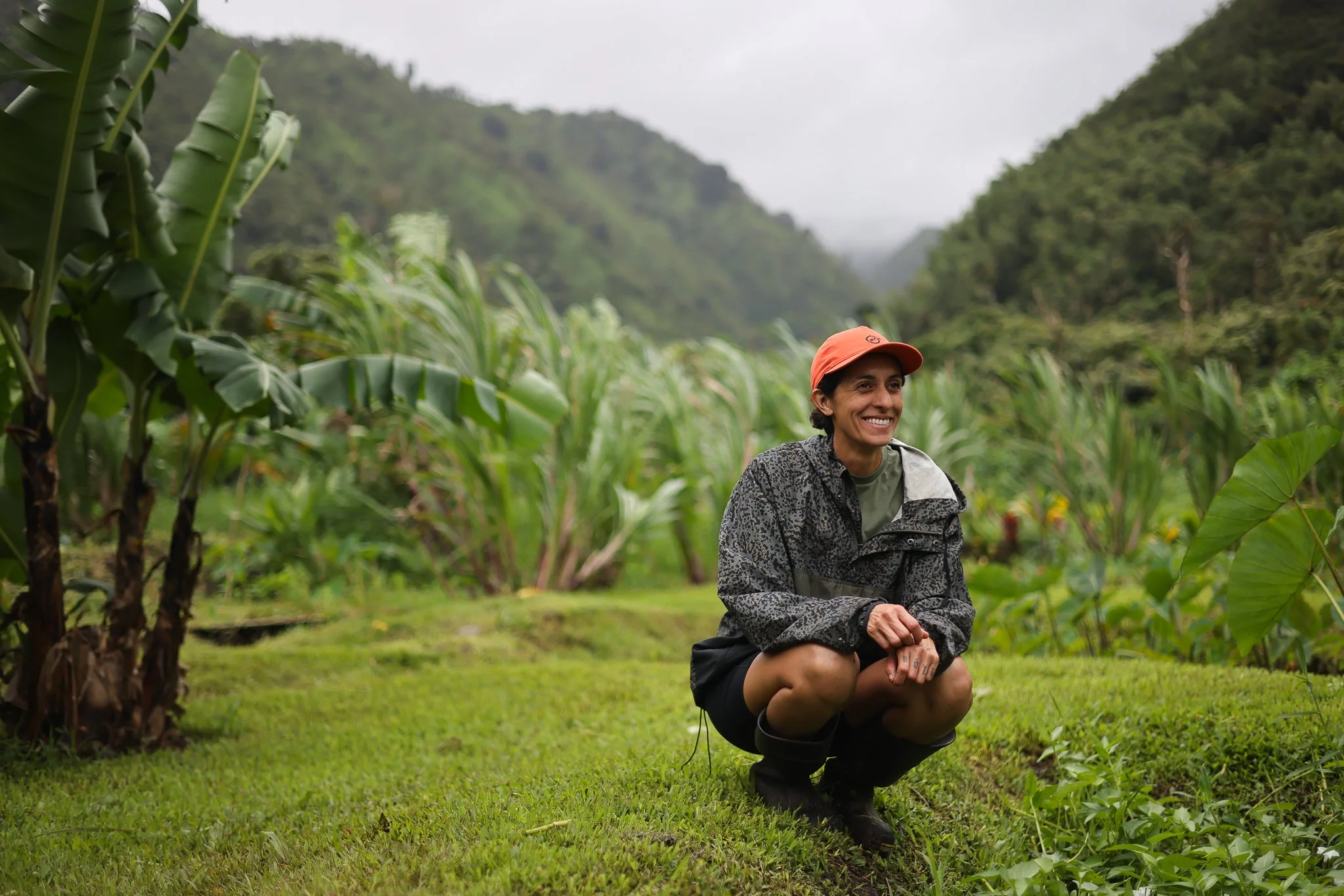
A cohort program supporting ʻāina stewardship organizations caring for Hawaiʻi’s most visited — and most vulnerable — places and wahi pana.
REGENERATIVE TOURISM CARES FOR OUR ENVIRONMENT.
For generations, the people of Hawaiʻi have thrived through systems designed not just to sustain - but to regenerate.
At the heart of these systems is the loʻi kalo: fed by mountain streams, rich in nutrients, and teeming with life. Water flows through the ʻauwai — a carefully maintained channel that connects source to field, upland to ocean. As it moves, it nourishes not just kalo, but ʻoʻopu, limu, iʻa, and eventually entire communities. The ʻauwai is more than infrastructure — it is kuleana. It is a reminder that regeneration requires care, connection, and commitment; that what flows to us must also flow through us.
The Community Tourism Collaborative - Community Stewardship program by HTA carries this ethic forward.
Hawaiʻi’s most sacred and most visited places are not separate. They are often one and the same. But these wahi pana — beloved, storied lands — bear the heaviest burdens of tourism. The CTC–Community Stewardship program exists to support the people who care for those places. These nonprofits, lineal descendants, and place-based leaders restore trails, replant forests, protect shorelines, and educate both kamaʻāina and malihini about the meaning of our beloved places.
They are the ʻauwai of today — linking past to future, culture to land, people to purpose.
WHAT THE PROGRAM OFFERS
The CTC - Community Stewardship program is an accelerator program for mālama ʻāina nonprofits or organizations organized for purposes other than profit who are caring for ʻāina and wahi pana designated as “tourism hotspots” by the state’s Destination Management Action Plans (DMAPs). The program provides cohort members with:
TECHNICAL ASSISTANCE
PEER COHORT LEARNING
Deepen technical skills in areas like volunteer and land management
Learn alongside a mission and values-aligned community
CAPACITY BUILDING
Strengthen stewardship practices through workshops & mentorship
Receive tailored support from the program team and subject matter experts
VISITOR INDUSTRY CONNECTIONS
STRATEGIC SUPPORT
Build pilina with stakeholders in the Hawai’i tourism sector
By supporting the essential work of these organizations and lineal descendants, the Hawaiʻi Tourism Authority and the Hawaiʻi visitor industry at large affirm that the future of tourism depends on the health of our places — and the people who care for them.
A SPOTLIGHT ON THE 2024 COHORT
In 2024, the Hawaiʻi Tourism Authority was honored and humbled to support nine (9) stewardship organizations across five (5) islands in further developing their capacity to care for ʻāina throughout Hawaiʻi nei.
Click below to learn more about the work of these incredible organizations.
Ahupuaʻa ʻo Hālawa
Hālawa Valley, Molokaʻi
Keaukaha, Hilo, Hawaiʻi Island
Honomanū, Maui
Haleakalā Conservancy
Haleakalā, Maui
Hawaiian Civic Club of Wahiawā
Wahiawā, Oʻahu
Hui Aloha Kīholo
Kīholo State Park Reserve, Hawaiʻi Island
Hui o Laka
Kōkeʻe & Waimea Canyon, Kauaʻi
North Shore Community Land Trust
Haleʻiwa, Oʻahu
Pōhāhā I Ka Lani
Waipiʻo Valley, Hawaiʻi Island
TECHNICAL ASSISTANCE & CAPACITY BUILDING PROGRAMS BY
To support development of a more regenerative tourism industry, the Hawaiʻi Tourism Authority introduced a suite of three new programs in 2024, collectively known as the Technical Assistance & Capacity Building (TACB) programs. Click below to learn more about how these programs are impacting businesses and nonprofits across Hawaiʻi.
The Foundational Technical Assistance program seeks to connect local businesses and nonprofits with foundational knowledge and connections with the visitor industry through a series of free, public panels, workshops, and seminars held across Hawaiʻi and streamed virtually.
The Community Stewardship program is a cohort based initiative aiming to assist local nonprofits that care for ʻāina and wahi pana (sacred places) taxed by tourism by connecting them with the visitor industry, expert assistance, and increased ʻike (knowledge) to build their internal capacity.
The Regenerative Experiences program is a cohort based initiative that aims to expand Hawaiʻi’s regenerative visitor industry by working with local businesses and nonprofits to develop more culturally-based, sustainable experiences for visitors that support local communities.
CONTACT US
Hoping to learning more about the move toward a more regenerative visitor industry for Hawaiʻi?
Interested in joining one of HTA’s cohort programs, or learning more about upcoming Foundational Technical Assistance workshops?
Fill out the contact form to the right, and we will be in touch soon.


















